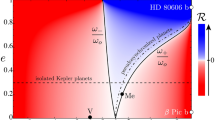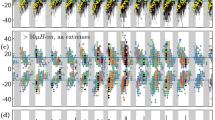Abstract
NOT the least important of our annual star showers are the Quadrantids, so called from the position of their radiant in the constellation of Quadrans Muralis, which is situated between Boötes and Draco. This meteor-system has not had the same attention lavished on it as has been given to the more historic epochs of the Leonids, Lyrids and Perseids. Vet occasionally, even when only moderately active, the Quadrantid Radiant furnishes displays of about 40 meteors per hour. In the year 1839 Herrick drew attention to the recurring character of a meteor shower on January 2. A stimulus was given in the same direction when in 1839 Quetelet published his valuable contribution to me teoric literature in his “Catalogue des Principales Apparitions d'Etoiles Filantes,” in which were cited two instances when meteors were reported to have been unusually numerous on the morning of January 2, vir. in 1835 and 1838. There was also a previous account of the appearance of an extraordinary bolide in the north of Italy in the year 1825, on the morning of January 2 at 5 o'clock, before and after which hour on that night there was noticed a great abundance of meteors.
This is a preview of subscription content, access via your institution
Access options
Subscribe to this journal
Receive 51 print issues and online access
$199.00 per year
only $3.90 per issue
Buy this article
- Purchase on Springer Link
- Instant access to full article PDF
Prices may be subject to local taxes which are calculated during checkout
Similar content being viewed by others
Rights and permissions
About this article
Cite this article
HENRY, J. The Quadrantid Meteors. Nature 65, 198–199 (1902). https://doi.org/10.1038/065198e0
Issue Date:
DOI: https://doi.org/10.1038/065198e0
Comments
By submitting a comment you agree to abide by our Terms and Community Guidelines. If you find something abusive or that does not comply with our terms or guidelines please flag it as inappropriate.



